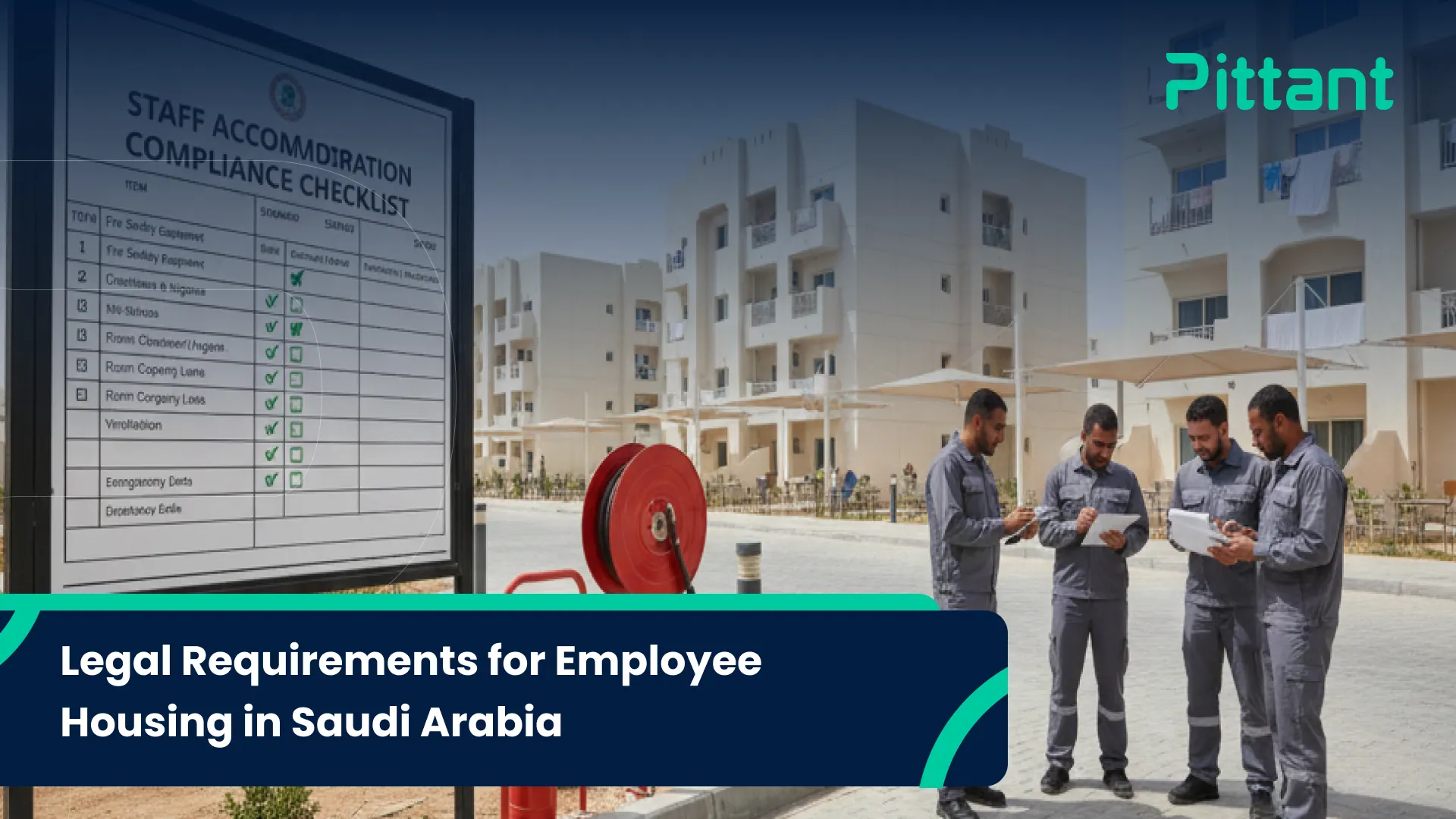The magic of technology is transforming your HR operations. Think quick, think perfect, now you don’t have to keep check on performance and admin tasks manually. The AI tech do it all for you in less time, requiring no efforts and energy.
Pittant, being the leading brand understand the importance of HR department of any businesses. We offer the HR assisting software that helps business running its operations smoothly with great precision. Below, we have discussed the significance of technology into the HR sector of any company and how it positively increase the progress and simplify tasks.
Streamline HR Processes with Cutting-Edge Software
The influence of technology has simplified human resources department and it’s functioning for a lot of enterprises. It has upgraded the dynamics of hiring of new candidates and also managing the current team.
How AI Can Revolutionize HR Operations
The field of artificial intelligence (AI) gives a new view to the business operations. With the help of it, entire sector of human resources (HR) has made progress drastically with the swift and easy approach. AI is transforming HR operations through data-driven insights, task automation, and improved employee experiences.
Leaving an irreplaceable mark on the corporate, AI helps in several areas like;
Hiring and Recruitment: regulating processes such as candidate sourcing, interview scheduling, and resume screening. Comparing applicants’ backgrounds and experiences to the job specifications can also aid in the identification of top talent.
Onboarding and offboarding – supplying specialized resources and information. AI can also automate off-boarding procedures, making the transition for departing staff seamless.
Performance management – monitoring worker output, giving immediate feedback, and pinpointing areas in need of development. Performance reviews that are more efficient and objective may result from this.
Employee engagement – enhancing the overall experience of employees by providing them with prompt answers to their questions. AI recognizes patterns and creates focused interaction plans.
Learning and Development – suggesting appropriate training programs and materials. AI-powered solutions can also monitor staff advancement and offer real-time feedback.
Elevate Your HR Operations with HR Management Systems
Level up your HR game with cutting-edge HR Management Systems. Simplified payroll, benefits, and performance tracking with ease, all of it is now feasible with software. This frees up your team to focus on what truly matters—enhancing employee satisfaction and drawing company success.
What is human capital management?
A team of any company is the asset. This is why its highly important to manage them effectively. This dealing and supervising is known as human capital management (HCM). Including nurturing, training and holding on to the efficient workers, help in meeting the company’s objectives.
HCM supervise many functions like Recruitment, onboarding, training, performance management, remuneration, and employee. Organizations can increase productivity, innovation, and overall success by managing their human capital well.
Importance of Technology in HR
Embark on the exciting future of HR with technology! The advanced tools to simplify processes, gives much space for clear decision-making, and help employee experiencing excellence. Technology isn’t just a trend—it’s the key to modify HR into a powerhouse of efficiency and innovation.
Unlock Insights: HR Data Analytics Platforms
Making data-driven decision about HR sector, the platforms for HR data analytics are significant for businesses. These mediums gather, examine, and assess HR data to offer insightful information about worker productivity, and engagement. Trends can be found here, HR procedures can be strengthened, and talent management tactics can be made better. Platforms for HR data analytics help businesses improve employee experienced and make better decisions. This ultimately helps in meeting their goals.
Protect Your Data: Employee Security Solutions
Secure the company’s data within the safe zone that is maintained with top-notch Employee Security Solutions! With this, you can easily prevent your data from threats while being carefree with robust protection.
Data Privacy and Security
Use advanced security measures like encryption, access controls, and frequent audits. This keeps away the unwanted access or breaches. By putting data privacy and security first, businesses can advance employee trust and comply to legal requirements.
Navigating HR Data Privacy Compliance
Making sure that employee data is handled in compliance with data protection laws is a crucial part of navigating HR data privacy compliance. This deals with getting employees’ express consent, collecting and storing personal data securely. It ensures strong safeguards in place to prevent unwanted access.
It is essential to regularly update privacy policies and provide HR staff with training on data protection procedures. Organizations also need to comply with reporting requirements and be ready to respond to data breaches. Ensuring compliance and safeguarding employee data requires staying up to date with constantly changing regulations and optimal methodologies.
Boost Engagement: Gamification in HR
Hiring can be fun if it is introduced with the interesting challenges. This initiative not only the draw in top candidates but also improve company’s image.
Gamification of Recruitment
Adding elements of games to the hiring process in order to increase engagement and effectiveness will not go wrong during hiring. This can include elements that resemble game mechanics, such as leaderboards, points, challenges, and rewards. The intention is to make the process of attracting and assessing candidates more engaging and joyful.
To evaluate skills and fit, for instance, businesses may use online simulations, tests, or competitive tasks. These methods can also aid in locating top talent by modifying and stimulating the recruitment process.
Improve Collaboration: Remote Work Tools for HR
If any company is offering the feasibility of virtual work, the use of suitable tools make it more engaging and simplified. The communication gets better and timely while the staff stays enthusiastic.
Remote Work and Virtual Collaboration Tools
In today’s globalized business landscape, remote work and virtual collaboration tools have become increasingly important. With the help of these tools, teams can operate productively and flexibly from any location.
With the help of features like video conferencing, instant messaging, document sharing, and project management tools. Remote teams can connect, communicate, and work together using virtual collaboration platforms. Using efficient virtual collaboration tools is essential for businesses to maintain high levels of productivity and employee satisfaction as remote work continues to gain popularity.
Foster Growth: Employee Feedback Platform
Boost the spirits of your team’s potential with a dynamic Employee Feedback Platform! Enhances growth, induce engagement, and performance by using feedbacks to your advantage. It’s the ultimate tool to cultivate a thriving, high-performance workplace.
Encourage feedback and collaboration
Building a supportive and effective work environment requires encouraging feedback and teamwork. Technology can be used to great advantage in this process by giving staff members a forum to freely and anonymously express their ideas, opinions, and concerns.
Feedback instruments, like suggestion boxes, surveys, and employee engagement platforms, can assist companies in identifying areas of improvement. This furthers leads to gaining insightful information, and creating a culture of ongoing learning and development. Organizations can foster a more innovative, inclusive, and employee-focused work environment by utilizing technology.
Simplify Hiring: Applicant Tracking Systems
Applicant Tracking Systems (ATS) manages and organizes job applications, making the hiring procedure simple and quick. These systems automatically sort and filter resumes based on keywords and qualifications, helping HR teams quickly identify the best candidates.
ATS also tracks candidates through each stage of the hiring process, from application to interview and offer. They help schedule interviews, send notifications, and keep detailed records of interactions with each applicant. By streamlining these tasks, ATS reduces the time and effort needed to handle large volumes of applications. This ultimately make the recruitment process more organized and efficient.
Conclusion
In conclusion, technology is revolutionizing HR departments by transforming how businesses manage their workforce. Advanced tools like AI, data analytics, and automation are streamlining administrative tasks, enhancing decision-making, and personalizing employee experiences. These innovations not only increase efficiency and accuracy but also enable HR professionals to focus on strategic initiatives that drive organizational growth. As technology continues to evolve, its impact on HR will only deepen, making it an indispensable force in shaping the future of work.
FAQs
How technology has improved HR?
Technology has enhanced HR through process simplification, data-driven insights, task automation, and improved employee experiences. Better decisions have been made in areas like hiring, onboarding, performance management, and employee engagement. As a result, efficiency has increased and expenses have decreased.
What is HR technology strategy?
HR technology strategy is a comprehensive plan. It outlines how an organization will leverage technology to improve its human resources operations. Involves identifying specific HR technology needs, selecting appropriate tools and implementing them effectively. It continuously evaluates their impact on organizational goals. A well-crafted HR technology strategy can help organizations enhance efficiency, improve employee experience, and achieve better business outcomes.
How HR is evolving with technology?
HR is evolving along with technology thanks to automation, AI, and data analytics. HR professionals can use these tools to streamline processes, and provide employees with individualized experiences.
AI, for instance, can automate repetitive processes like reviewing resumes, and data analytics facilitates the understanding of employee needs and trends. Processes like performance reviews and onboarding can be simplified with automation tools. In general, these technologies improve the effectiveness and personalization of HR work.




